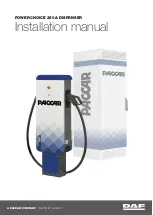
yellow
blue
6-41
CAUTION:
If you use bias
-
ply tires on your vehicle, the
wheel rim flanges could develop cracks after
many miles of driving. A tire and/or wheel could
fail suddenly, causing a crash. Use only radial
-
ply
tires with the wheels on your vehicle.
Uniform Tire Quality Grading
The following information relates to the system developed
by the United States National Highway Traffic Safety
Administration, which grades tires by treadwear, traction
and temperature performance. (This applies only to
vehicles sold in the United States.) The grades are molded
on the sidewalls of most passenger car tires. The Uniform
Tire Quality Grading system does not apply to deep tread,
winter
-
type snow tires, space
-
saver or temporary use spare
tires, tires with nominal rim diameters of 10 to 12 inches
(25 to 30 cm), or to some limited
-
production tires.
While the tires available on General Motors passenger
cars and light trucks may vary with respect to these
grades, they must also conform to Federal safety
requirements and additional General Motors Tire
Performance Criteria (TPC) standards.
Treadwear
The treadwear grade is a comparative rating based on
the wear rate of the tire when tested under controlled
conditions on a specified government test course. For
example, a tire graded 150 would wear one and a half
(1 1/2) times as well on the government course as a tire
graded 100. The relative performance of tires depends
upon the actual conditions of their use, however, and
may depart significantly from the norm due to variations
in driving habits, service practices and differences in
road characteristics and climate.
Traction
--
AA, A, B, C
The traction grades, from highest to lowest, are AA, A,
B, and C. Those grades represent the tire’s ability to stop
on wet pavement as measured under controlled
conditions on specified government test surfaces of
asphalt and concrete. A tire marked C may have poor
traction performance. Warning: The traction grade
assigned to this tire is based on straight
-
ahead braking
traction tests, and does not include acceleration,
cornering, hydroplaning, or peak traction characteristics.
Summary of Contents for 1999 Prizm
Page 57: ...yellowblue 1 49...
Page 70: ...yellowblue 1 62 NOTES...
Page 112: ...yellowblue 2 42 The Instrument Panel Your Information System...
Page 115: ...yellowblue 2 45 Optional Cluster...
Page 127: ...yellowblue 2 57 NOTES...
Page 128: ...yellowblue 2 58 NOTES...
Page 146: ...yellowblue 3 18 NOTES...
Page 184: ...yellowblue 4 38 NOTES...
Page 185: ...yellowblue 4 39 NOTES...
Page 186: ...yellowblue 4 40 NOTES...
Page 218: ...yellowblue 5 32 NOTES...
Page 280: ...yellowblue 6 62 NOTES...
Page 326: ...yellowblue 7 46 Maintenance Record DATE ODOMETER READING SERVICED BY MAINTENANCE PERFORMED...
Page 327: ...yellowblue 7 47 Maintenance Record DATE ODOMETER READING SERVICED BY MAINTENANCE PERFORMED...
Page 328: ...yellowblue 7 48 Maintenance Record DATE ODOMETER READING SERVICED BY MAINTENANCE PERFORMED...
Page 342: ...yellowblue 8 14 NOTES...
















































